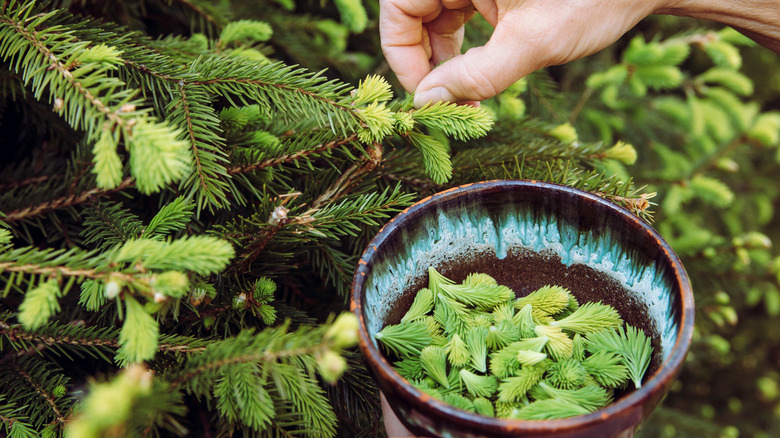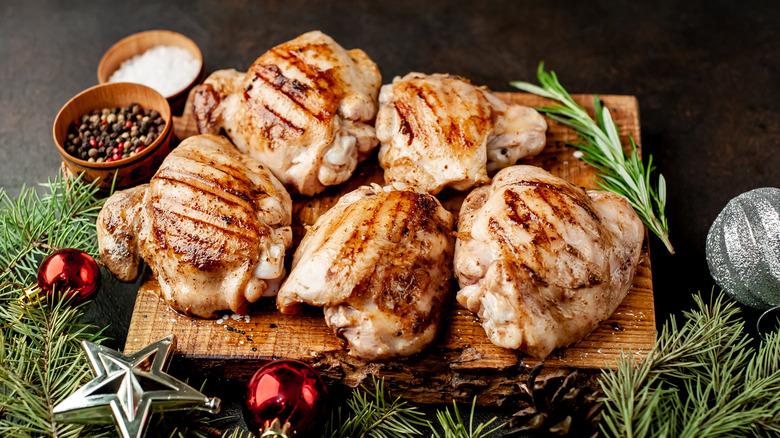How To Safely Repurpose Your Christmas Tree As Holiday Food
When the festive spirit starts to wane, the Christmas tree that we so enthusiastically put up becomes another chore in our post-holiday to-do list. Some like to leave it as is until the needles start to fall and the tree begins to wither down, but historically, Christmas trees are taken down on the Eve of the Epiphany, which falls on the 12th night after Christmas. The second step is to decide what to do after the tinsel comes off.
Before you chop it up and discard it in a green bin, consider this: You can turn your Christmas tree into an aromatic accouterment. If you haven't looked at it tree and thought of ways to consume it, yes, it is entirely possible and safe as long as the tree is in good condition. Spruce, fir, and pine can be used in various recipes including cocktails, desserts, pickles, tea, and much more.
The first step to safely repurposing your Christmas tree as holiday food is to figure out whether it was exposed to something that could be toxic like pesticides or chemicals used to treat the tree. Due to the risks, it's best to discard trees of unknown origins. If you're dealing with a spruce tree, it's best to wear gloves to protect your hands from their sharp needles. People should also not consume the uncommonly used and very poisonous yews and cedars. Always identify the species before consumption and beware of potential allergic reactions.
Know your tree flavors
Some Christmas trees are edible, but they don't all taste the same. Fir needles have a citrusy aroma, and so do spruce tips. No two tips taste the same — both fir and spruce have many different species, and their taste and aroma vary accordingly. They can be incorporated into cocktails, salads, tea, pickles, and dips, and used as flavoring agents in baked goods.
Pine, on the other hand, has a fresh, herbal aroma. Although the most popularly consumed part of pine trees are the nuts, its needles, and inner bark are also edible. Young pine cones are also edible. Female cones have a hard shell and can be eaten after boiling. Male cones can be eaten as is.
While pine needles are safe to ingest, one should exercise caution because the pointed needles can be a choking hazard, especially for children. The best way to incorporate the aromatic flavor of pine needles in your recipe may be to steep and strain them.

